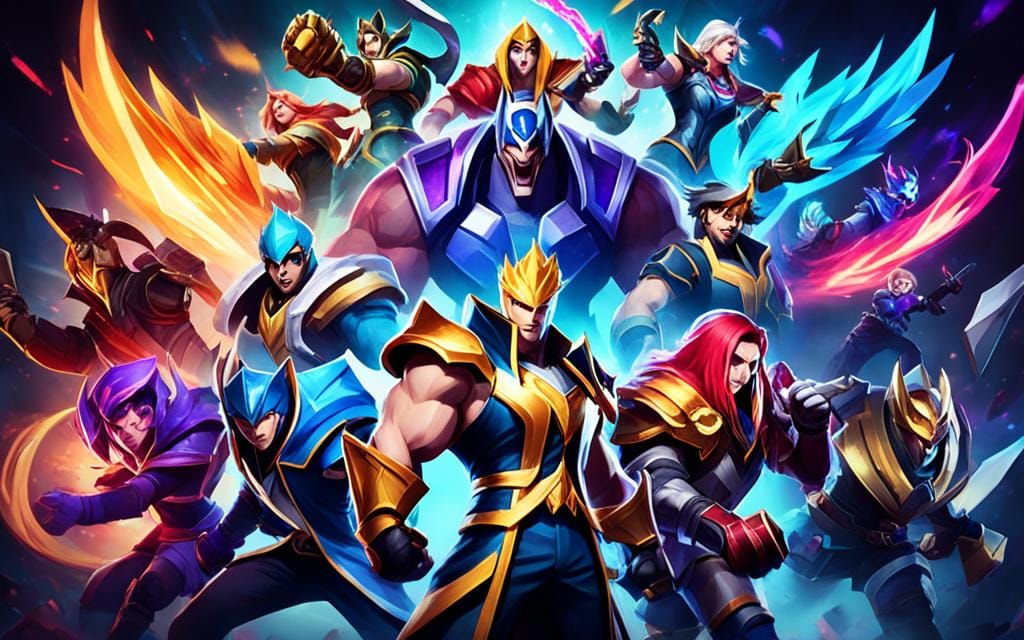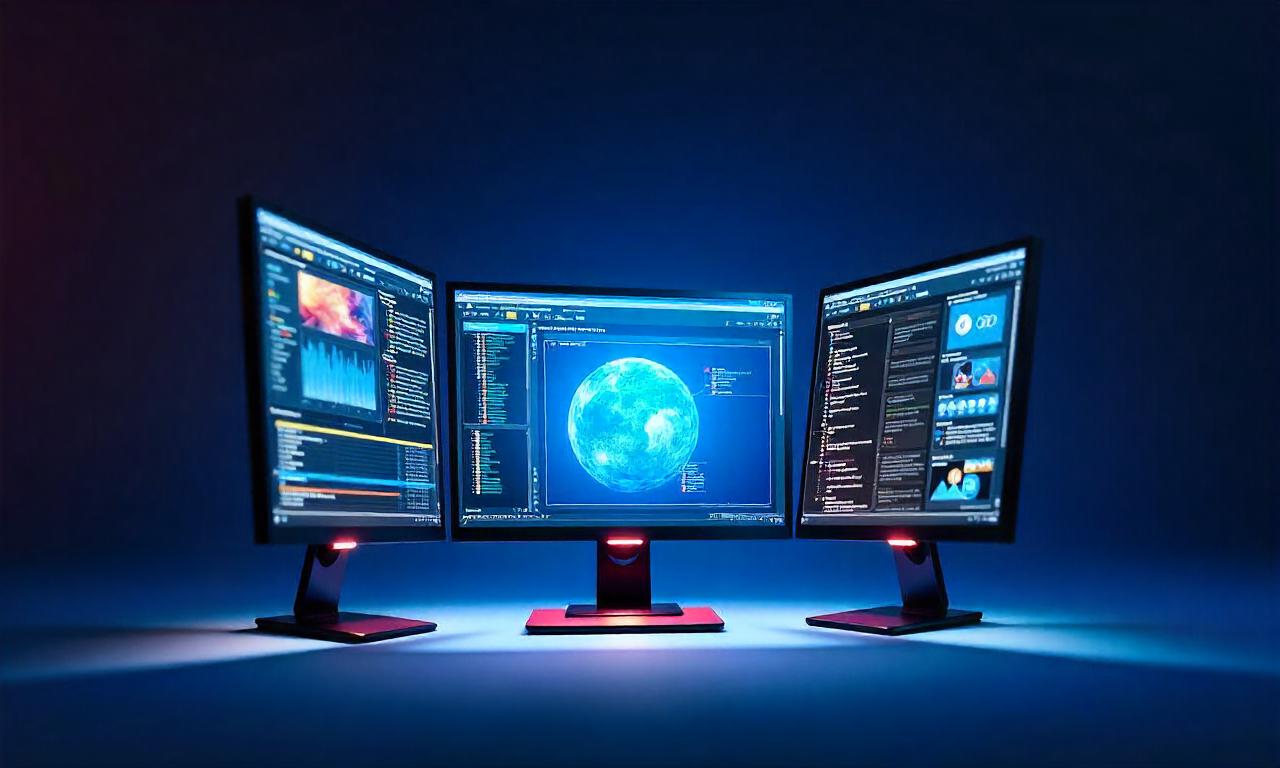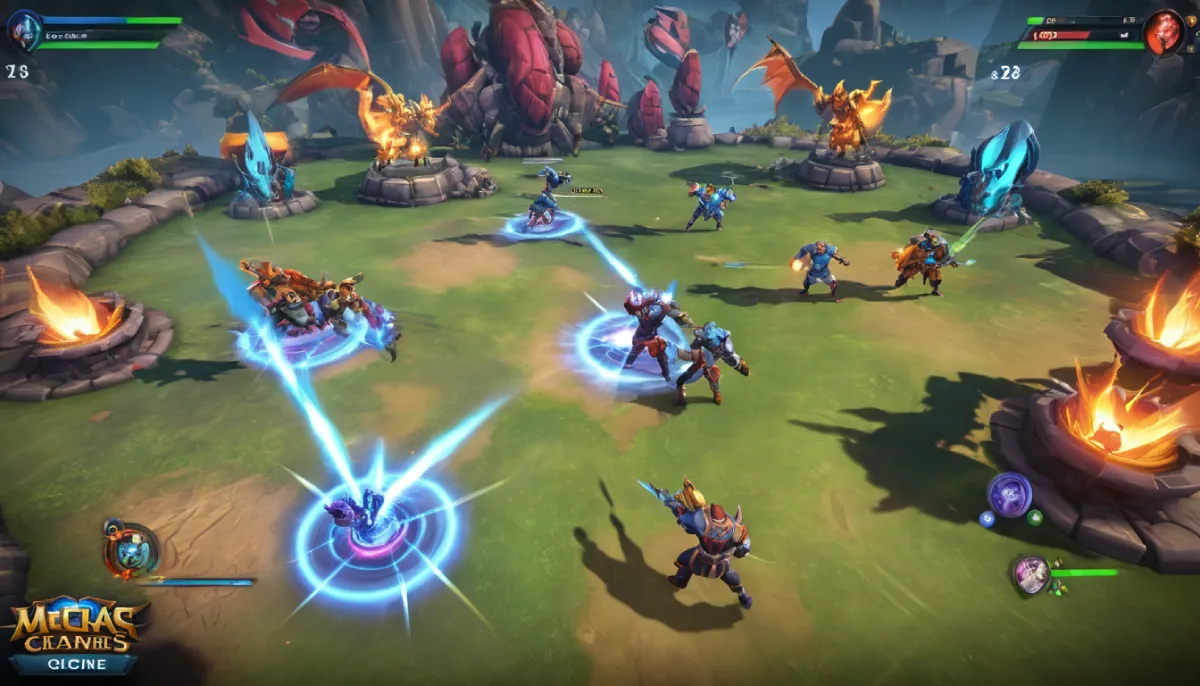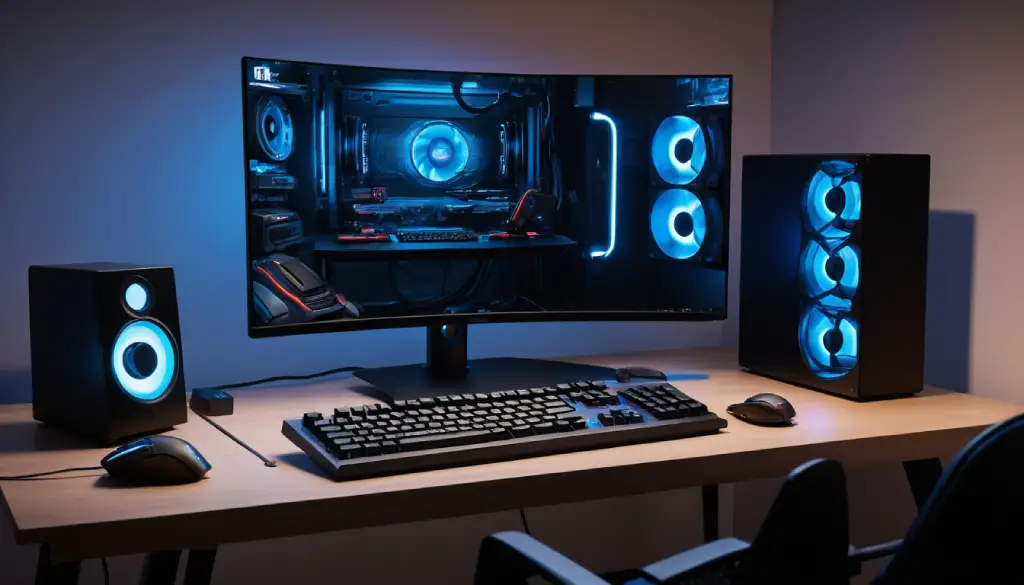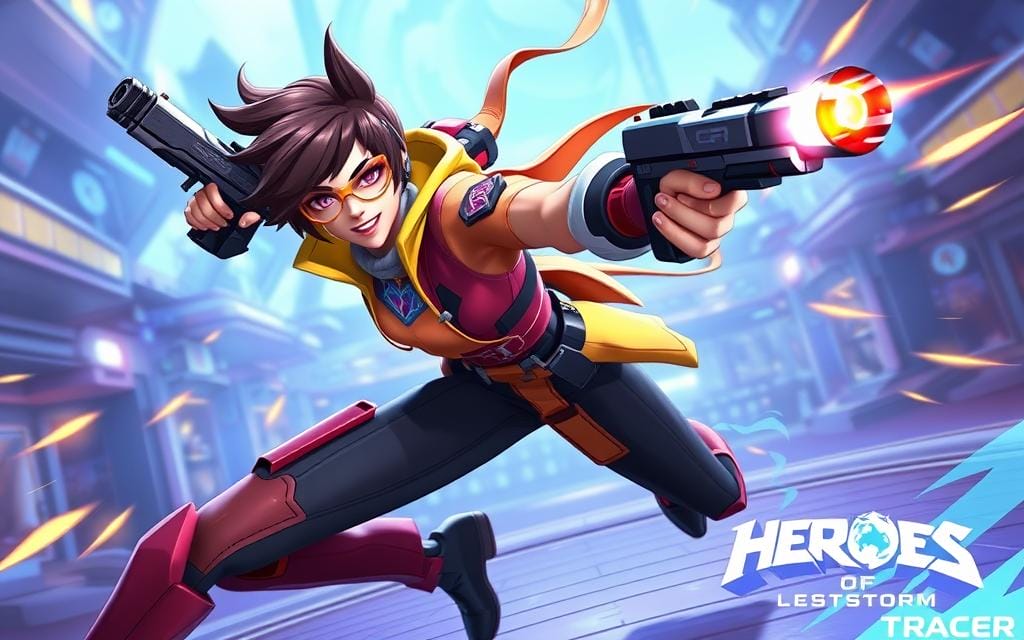We’re going to look into the league of legends arena ranks. This guide will show you the different lol ranked tiers and league arena divisions. It will explain how to climb the league ranked ladder. We will talk about the arena ranks in the league competitive scene. And, we will discuss the importance and function of lol arena matchmaking.
Also, we’ll explore how professionals use the ranks. This includes the rank requirements for pro play. After reading this guide, you will understand lol ranked progression well. You will also know lol rank distribution. Plus, you’ll be better at using the league of legends ranked system.
Introduction to League of Legends Arena Ranks
In League of Legends, the arena rank system molds the game’s competitive scene. Players work to climb ranks, proving their skills against others. This section will dive into the league of legends arena ranks, explaining their structure and importance for competitive play.
Understanding the Ranked System
The League of Legends ranked system is a complex web of tiers and divisions. This system guides players from Iron to Grandmaster, as they overcome challenges. They earn League Points (LP) and move up divisions, showcasing their game mastery.
Importance of Arena Ranks in Competitive Play
Arena ranks are crucial in League of Legends for those aiming for top-level play. These ranks reflect a player’s skill and strategy, allowing them access to high-level competitions. Climbing the ranked ladder both sharpens a player’s skills and boosts the competitive community.
League of Legends Arena Ranks
Exploring the League of Legends arena ranks is vital for understanding the game’s competitive side. It starts from the basic levels to the very top, showing different skills and mastery levels. In this discussion, we will cover the various ranks, skill levels, who plays at each level, and how they look.
Iron, Bronze, and Silver Tiers
The Iron, Bronze, and Silver divisions are where new or still learning players start. Here, the focus is on individual performance. Players aim to get better at controlling their champion, making decisions, and being aware of the game’s map. The badges for these ranks are simple and one color. This simplicity shows the basic nature of playing at this level.
Gold and Platinum Tiers
Players moving forward find themselves in the Gold and Platinum ranks. Here, they understand the game’s nuances better. Teamwork and talking with your team are crucial. You must plan with your team to succeed. The badges are more complicated in these ranks. They use more colors and symbols. This represents the higher level of play here.
Diamond, Master, and Grandmaster Tiers
The top tiers include Diamond, Master, and Grandmaster. These are for the most skilled and serious players. These players have truly mastered their champions and the game’s maps. They play complex team strategies without error. Badges in these ranks are bold and unique. They often have special designs showing off the player’s great skills and dedication.
Ranked Progression and Rank Distribution
In League of Legends, moving up the ranked ladder is a thrilling challenge. It shows who’s skilled and who’s exceptional. The heart of this journey is the league points (LP) system. It guides players as they strive to rise through the ranks and achieve their goals. This system reveals how players’ tiers are determined and how ranks are distributed across the community.
League Points and Tier Promotion
Ranked progression begins with league points (LP) in League of Legends. Winning matches in ranked earns players LP. This shows how well they’ve performed against their opponents. As players gather enough LP, they can move up to the next division in their tier.
Advancing this way makes the climb transparent and rewarding. Every win gets them closer to their ranked goals. But, the challenge intensifies when players aim to move up a tier. They face a series of promotional matches. These matches are a measure of their readiness to advance.
To pass the promo matches, players must win a certain number of games in a few tries. It ensures that only those with real skill can go up in tiers. Succeeding at this test shows a player’s deep understanding of the game and their strategy. This hurdle marks a big step forward in their ranked journey.
Rank Distribution and Percentiles
It’s crucial to see the big picture when climbing the ranked ladder. Knowing where you stand among other players is key. Ranking distribution and percentiles shed light on the game’s overall skill levels.
These stats help understand the player base better. For example, knowing that you’re among the top 10% in a tier means you’re very talented and dedicated. It gives you insight into where you can improve and how your skills compare to others.
Learning about rank distribution and your percentile is empowering. It guides your decisions in your ranked journey. It helps set realistic goals for getting better. This knowledge is a great aid for all players striving to improve.
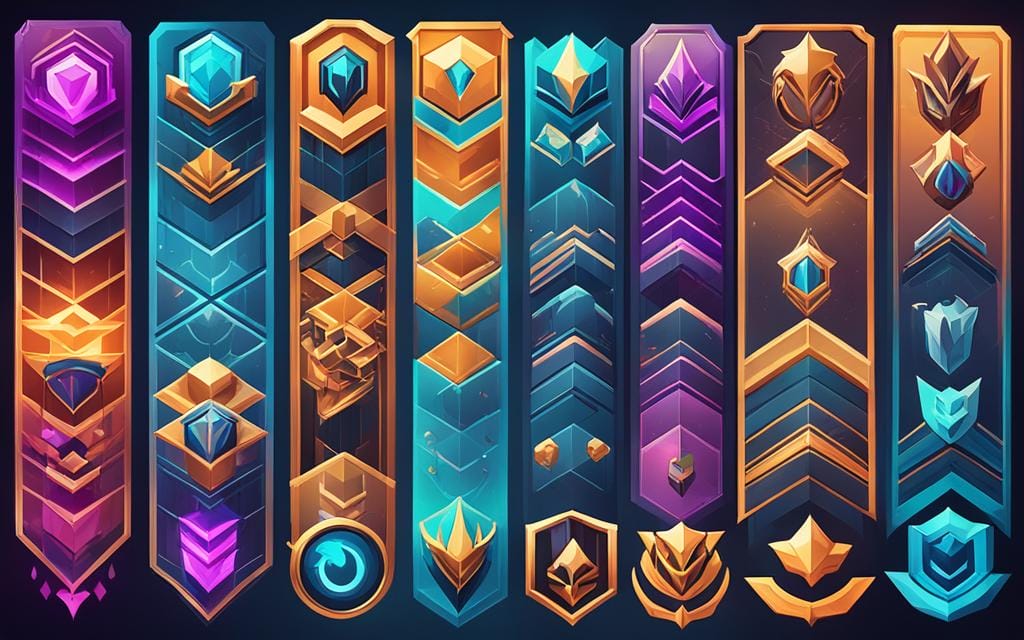
Role of Arena Ranks in Matchmaking
The League of Legends uses a smart system for matchmaking. This system makes sure everyone has a chance to win, no matter their skill level. It uses something called Matchmaking Rating, or MMR, to match players fairly.
Matchmaking Rating (MMR) Explained
MMR is like a score that shows how good a player is. It looks at parts like wins, how well a player does, and who they play against. Then, it tries to put players against others with a similar MMR. This makes the game more fun and fair for everyone.
Your rank and MMR are connected. Ranks show how well you’ve done, but MMR really shows your skill. As you move up the ranks, your MMR goes up too. This means you face tougher but still fair challenges.
Understanding MMR helps players know where they stand and what they can do to get better. Knowing this can push them to set goals and climb higher in the game’s competitive ladder. This way, they can aim for more wins and better experiences in every match.
Ranked Emblems and Visual Representation
In League of Legends, climbing the ranked ladder is key for players. As they progress, they get special emblems and icons. These show off their skill level and bring a sense of pride.
Tier and Division Emblems
League of Legends has a system based on tiers, like Iron through Grandmaster. Each tier has four divisions, I through IV, with I the top. Players show their rank with unique emblems, seen by all in the game.
Special Ranked Icons and Rewards
For top performances, special rewards are given. This includes unique icons for Grandmaster or Challenger players. Plus, there are seasonal rewards like skins and borders. These rewards celebrate a player’s effort and are a badge of honor in the League of Legends world.
Ranked Play Best Practices
To do well in League of Legends’ ranked play, we’ll share top strategies. They will boost both your personal play and team efforts. This approach will help you advance through the ranks and meet your ranked progression goals.
Improving Individual Performance
Being great in ranked play means doing many things. First, learn everything about your champion – how they work, who they’re good against, and more. Know what your role needs you to do and do it well. Also, be smart about the map and when to make the best moves for your team.
Keep an eye on how you play and look for ways to get better. Try out different game approaches, item choices, and roles. This helps you figure out your best ways to win. Remember, you get better by learning and practicing a lot.
Teamwork and Communication Strategies
Teamwork is vital in League of Legends. Talk clearly with your team, inside and outside of the game. Work together to plan moves and decide on strategies to beat the other team.
Understand how your team works best by knowing each member’s strong points. Be ready to change how you play or which champions you use to fit your team’s needs. Create a positive space for your team. This helps everyone feel like they can bring their best to the game.
Keep at it with these helpful tips and strategies. Doing so prepares you for the challenges of ranked play. You’ll move up the ranks steadily, reaching your goals in ranked play.
The Competitive League of Legends Scene
League of Legends is the most popular esports game worldwide. It has a huge competitive scene loved by millions. Players from all over the globe compete in leagues and tournaments to show their skills at the highest level.
Professional Leagues and Tournaments
In the League of Legends world, top competitions include the LCS in North America and the LEC in Europe. There’s also the LPL in China. The best players from these tournaments get to go to the World Championship.
Rank Requirements for Professional Play
To get into the big leagues, players need to be really good. The ranked system in the game shows how skilled they are. Getting to the Diamond or higher ranks is important for joining pro teams.
Rank Decay and Inactivity Rules
In the world of lol ranked progression, understanding rank decay and inactivity rules is crucial. These rules protect the competitive integrity. They stop players from keeping high ranks without playing.
Decay Timers and LP Loss
When players are inactive in ranked games, their rank can decrease. The time before rank decay starts varies per player’s tier. But, players in Diamond or higher tiers must play a ranked game every 28 days. If they don’t, they will lose a lot of League Points. This could make them fall to a lower rank or tier.
These rules aim to keep players active in ranked games. By playing, they can maintain their rank and improve their skills. This also helps with the lol arena matchmaking system.
It’s important for those who want to keep a high rank to know these rules. Staying active in ranked games helps your rank stay accurate. It shows your true skill level in the League of Legends community.
Ranked Game Modes and Queues
In this final part, we’re diving into ranked game modes and queues in League of Legends. Each queue has its own features and strategies. Knowing these will help you pick the best mode for you.
Solo/Duo Queue
The Solo/Duo queue lets you play alone or with one friend. It’s for those who like being in control or working closely with someone. Here, you’ll play against players with similar skills, making matches fair and exciting.
Flex Queue
The Flex queue is for groups of up to five friends. It’s perfect for players who love teamwork and deep strategy. Winning in Flex means working well together and understanding how your team works best. The challenge is tough, but it’s a chance to shine as a team.
If you like playing alone or with friends, there’s a mode for you in League of Legends. By understanding how Solo/Duo and Flex queues work, you’ll know the right ladder to climb. This way, you can show off your skills in the league.
FAQ
What are the different tiers and divisions in the League of Legends arena rank system?
The League of Legends has many tiers like Iron, Bronze, Silver, Gold, Platinum, Diamond, Master, and Grandmaster. Each tier has four divisions (I-IV).
How do players progress through the ranked ladder in League of Legends?
Players win League Points (LP) in ranked matches. When they get enough LP, they move up to the next division or tier. How they get promoted depends on their rank and how well they play.
What is the importance of arena ranks in the competitive play of League of Legends?
Ranks are crucial in competitive play. They show how good a player is. Players with high ranks might join pro teams or play in esports.
How does the League of Legends matchmaking system work, and how does it relate to arena ranks?
The game uses an MMR system to match players. MMR comes from a player’s performance and influences their rank. The goal is to make fair games by matching MMR and ranks.
What are the visual representations of arena ranks in League of Legends?
Every rank has a unique emblem. Players can also get special icons and rewards for high ranks.
What are some best practices for players to improve their performance and climb the ranked ladder in League of Legends?
Improvement is a focus, such as getting better at champions and making smart decisions. Teamwork and good communication are also key. These steps help move up the ranks.
What are the rank requirements for players to participate in the professional League of Legends scene?
To play professionally, a player must be Diamond rank or higher. This is a common requirement for pro teams and tournaments.
How does rank decay work in League of Legends, and how can it affect a player’s arena rank?
If a player doesn’t play enough, they can lose League Points (LP). This happens to keep the system fair. The amount of LP lost and the time limits depend on a player’s rank.
What are the different ranked game modes and queues available in League of Legends?
The game offers Solo/Duo and Flex queues. Solo/Duo is for up to two players, while Flex lets more friends play together. Each mode has its own challenges and tactics.

